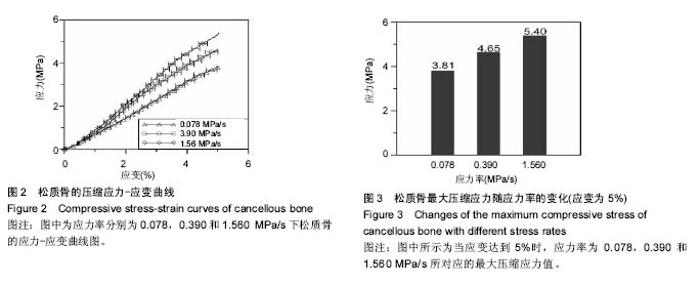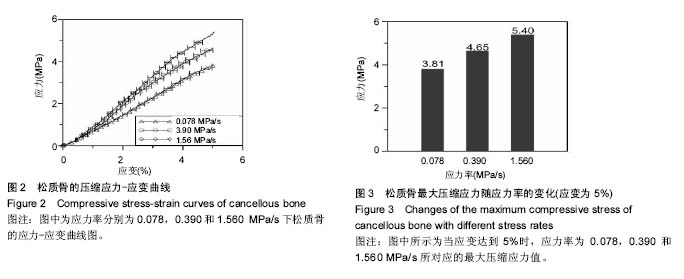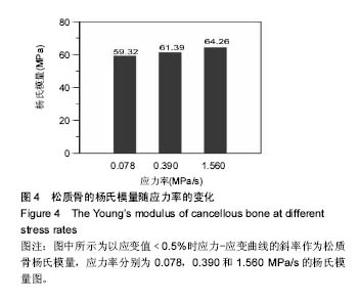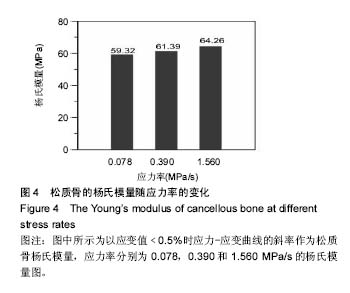| [1] 钟显春,罗民,李新颖,等. 几种药物治疗骨质疏松模型大鼠股骨蠕变特性的对比分析[J]. 生物医学工程研究, 2012,31(3): 180-183,187.[2] Cotton JR, Zioupos P, Winwood K, et al. Analysis of creep strain during tensile fatigue of cortical bone. J Biomech.2003; 36(7):943-949.[3] Öhman C, Baleani M, Pani C, et al. Compressive behaviour of child and adult cortical bone. Bone. 2011;49(4):769-776.[4] 刘庆利,权铁刚,于涛,等.股骨颈松质骨三方向压缩应力松弛蠕变实验[J].生物医学工程研究,2008, 27(2) : 93-96.[5] Vale AC, Faustino J, Reis L, et al. Effect of the strain rate on the twisting of trabecular bone from women with hip fracture. J Biomech Eng. 2013;135(12):569-579.[6] Keaveny TM, Wachtel EF, Guo XE, et al. Mechanical behavior of damaged trabecular bone. Biomech. 1994;27:1309-1318.[7] Harada Y, Wevers HW, Cooke TD. Distribution of bone strength in the proximal tibia. Arthroplasty. 1988;3:167-175.[8] Hvid I. Mechanical strength of trabecular bone at the knee. Dan Med Bull. 1988;35:345-365.[9] Eswaran SK, Gupta A, Adams MF, et al. Cortical and trabecular load sharing in the human vertebral body. Bone Miner Res.2006;21:307-314.[10] 丁海,朱振安,薛晶,等. 骨质疏松症对松质骨骨小梁应力与微损伤关系的影响[J]. 医用生物力学, 2015, 30(1):68-73.[11] 温鑫鑫,严亚波,宗春琳,等.骨质疏松兔松质骨微观结构和微观成分的时间序贯性变化[J]. 现代生物医学进展, 2015, 15(34): 6633-6637.[12] 蒋超,王以朋,邱贵兴,等. 晚期骨关节炎患者膝关节软骨下松质骨祖细胞的特性研究[J].中国骨与关节外科, 2016, 9(1):69-74.[13] Sasaki N, Nakayama Y, Yoshimawa M, et al. Stress relaxation function of bone and bone Collagen. Biomech. 1993;26: 1369-1376.[14] 张伊卓,宋雅伟,卞雯文.股骨颈的实验力学研究[J]. 中国骨质疏松杂志, 2015,21(9):1065-1068.[15] Iyo T, Maki Y, Sasaki N, et al. Anisotropic viscoelastic properties of cortical bone. J Biomech. 2004;37:1433-1437.[16] 吴丹凯,李新颖,李鹏.老年胸腰椎松质骨的扭转力学特性[J]. 中国老年学, 2015, 35(1):180-181.[17] Ji B, Gao H. Mechanical properties of nanostructure of biological materials. Mech Phys Solids. 2004;52 :1963-1990.[18] 张翘,张淑娟,李新颖.青年与老年胸椎松质骨应力松弛特性对比分析[J]. 中国老年学, 2015, 35(2):395-396.[19] Novitskaya E, Zin C, Chang N,et al. Creep of trabecular bone from the human proximal tibia. Mat Sci Eng. 2014;40: 219-227.[20] 刘庆. 松质骨的粘弹性力学特性分析[D]. 暨南大学, 2013.[21] Morgan EF, Bayraytar HH, Keaveny TM. Trabecular bone modulus-density rela-tionships depend on anatomic site. J Biomech. 2003;36:897-904.[22] Ciarelli MJ, Goldstein SA, Kuhn JL, et al. Evaluation of orthogo-nal mechanical properties and density of human trabecular bone from the major metaphysealregions with materials testing and computed tomography. Orthop.Res. 1991;9:674-682.[23] Goulet RW, Goldstein SA, Ciarelli MJ, et al. The relationship between the structural and orthogonal compressive properties of tra-becular bone. Biomech. 1994;27:375-389.[24] Lambers FM, Bouman AR, Rimmac CM, et al. Microdamage Caused by Fatigue Loading in Human Cancellous Bone:Relationship to Reductions in Bone Biomechanical Performance. PLOS ONE. 2013;8(12):e8366662.[25] 赵长福,高中礼,马中胜,等. 股骨上端松质骨压缩粘弹性实验研究[J]. 吉林大学学报:工学版, 2002, 32(2):87-90.[26] Guedes RM, Simões JA, Morais JL. Viscoelastic behaviour and failure of bovine cancellous bone under constant strain rate. J Biomech. 2006;39(39):49-60.[27] Ochoa JA,Sanders AP,Heck DA,et al. Stiffening of the femoral head due to intertrabecular fluid and inraosseous pressure. J Biomech Eng.1991;13:259.[28] 陈旭义,张西正.骨组织生长重建的力学生物学机制研究进展[J]. 力学进展, 2007, 37(4):601-610. |





